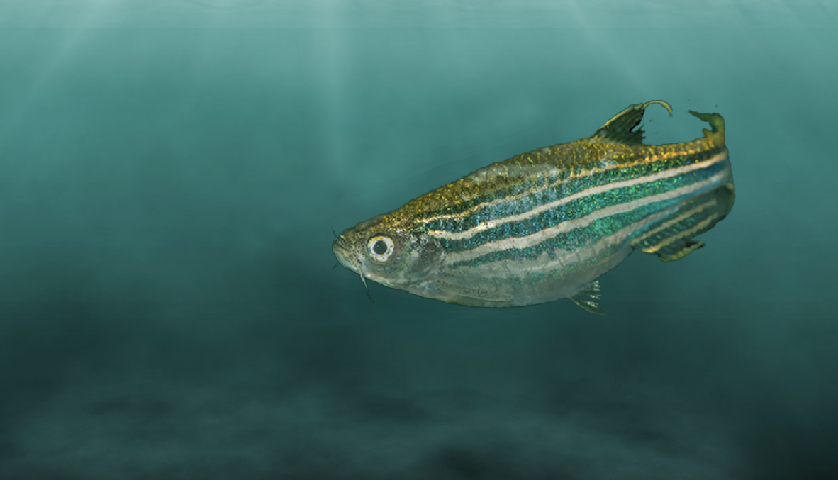
Zebrafish
One action identified by the research community and included in the report Reducing Administrative Burden for Researchers: Animal Care and Use in Research in response to the 21st Century Cures Act is to consider changing the applicability of the PHS Policy to zebrafish larvae from immediately after hatching (typically 3 days post fertilization [dpf] under optimal conditions) to when larvae begin free feeding (at approximately 5 – 7 dpf).
While OLAW encourages institutions to use flexibilities to reduce administrative burden while using zebrafish in research (NOT-OD-21-118), the PHS Policy continues to cover zebrafish larvae immediately after hatching.
On this page:
Policies and Laws

PHS Policy III.A.: Defines an animal as "[a]ny live vertebrate animal used or intended for use in research, research training, experimentation, or biological testing or for related purposes."
PHS Policy IV.D.1.A.: "All Institutions: Applications and proposals (competing and noncompeting) for awards submitted to the PHS that involve the care and use of animals shall contain the following information:
a. identification of the species and approximate number of animals to be used;"
U.S. Government Principles IV: "Proper use of animals, including the avoidance or minimization of discomfort, distress, and pain when consistent with sound scientific practices, is imperative. Unless the contrary is established, investigators should consider that procedures that cause pain or distress in human beings may cause pain or distress in other animals."

Guidance
| Notice Number | Description | Date |
|---|---|---|
| NOT-OD-21-118 | Request for Information (RFI) on Flexibilities to Reduce Administrative Burden While Continuing to Apply the PHS Policy to Zebrafish Immediately After Hatching | May 7, 2021 |
Resources
FAQs
FAQ A.4 Does the PHS Policy apply to live embryonated eggs?
FAQ A.5 Does the PHS Policy apply to larval forms of amphibians and fish?
Yes, larval forms of fish and amphibians have vertebrae and are covered by the PHS Policy. As noted in FAQ A4, the PHS Policy applies to the offspring of egg-laying vertebrates only after hatching. Zebrafish larvae, for example, typically hatch 3 days post-fertilization. [A21]
FAQ D.17 What guidelines should IACUCs follow for fishes, amphibians, reptiles, birds, and other nontraditional species used in research?
PHS Policy is intentionally broad in scope and does not prescribe specifics about the care and use of any species, assigning that task to the IACUC and allowing for professional judgment. Many of the principles embodied in the Guide can generally be adapted to the care and use of various kinds of nontraditional research animals. IACUCs may seek the advice of experts when necessary, and refer to scientific-based publications prepared by professional organizations with interest in various species. Appendix A of the Guide references many such publications. [A7]
FAQ F.2 When and how should animals be tracked on approved protocols?
The PHS Policy defines an animal as any live, vertebrate animal used or intended for use in research, research training, experimentation, or biological testing or for related purposes (PHS Policy III. A). Therefore, all live vertebrate animals, including their offspring, should be accounted for in a timely manner that ensures the animal numbers approved by the IACUC are not exceeded. Animals born or hatched should be accounted for at the first opportunity without compromising the health and welfare of the animals. Pre-weaned animals from litters are to be tracked at the time of first manipulation, e.g., first cage change. The PHS Policy applies to amphibians and fish upon hatching (see FAQ A4, A5). For example, zebrafish typically hatch 3 days post-fertilization, subject to environmental conditions. Per the Guide (page 87), because it can be difficult to individually identify some small aquatic species throughout their lives, group identification may be more appropriate in some situations or an approximate number of animals may be used.
While the PHS Policy has no explicit requirement for investigators or the IACUC to track animal usage, it does require that proposals specify a rationale for the approximate number of animals to be used and for the appropriateness of the species and numbers used to obtain valid results (US Government Principles, III; PHS Policy IV.D.1.b). This implicitly requires that institutions establish mechanisms to document and monitor numbers of animals acquired, born, and used. Institutions have adopted a variety of administrative, electronic, and manual mechanisms to meet institutional needs as well as PHS Policy requirements.
Webinars
| Webinar Link | Webinar Date |
|---|---|
| Zebrafish 101 for IACUCs | March 12, 2015 |
Articles
| Title | Description | Date |
|---|---|---|
| Zebrafish 13(6):1-2 | Hatching Fish - When should animal tracking begin? | 2016 |
| Lab Animal 35(1) | Should you count your mice before they're weaned? | 2006 |








